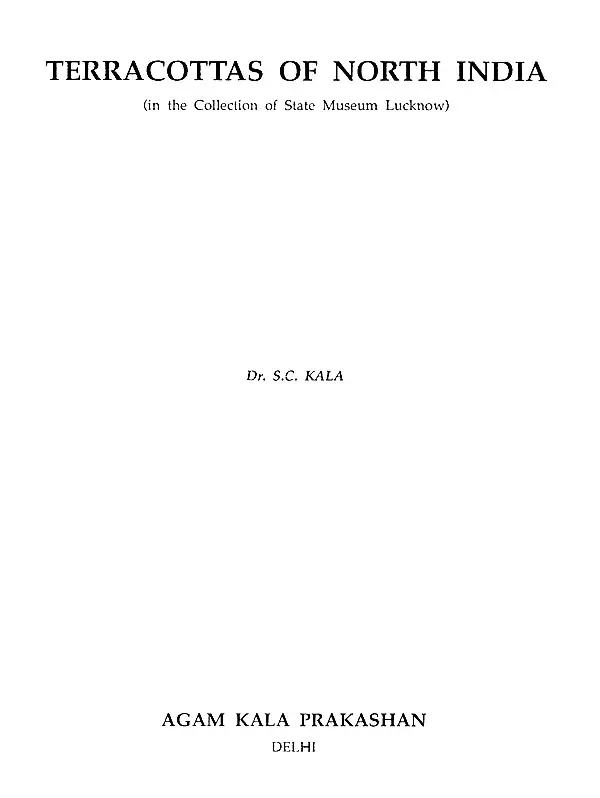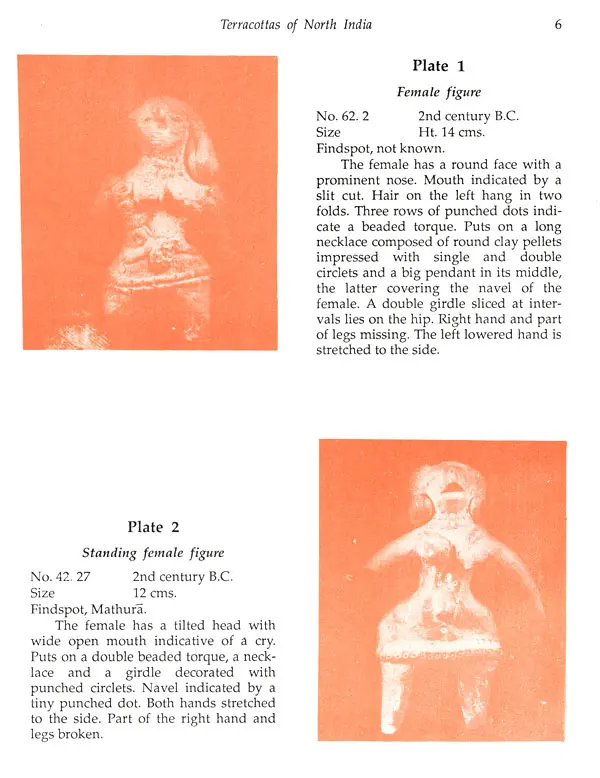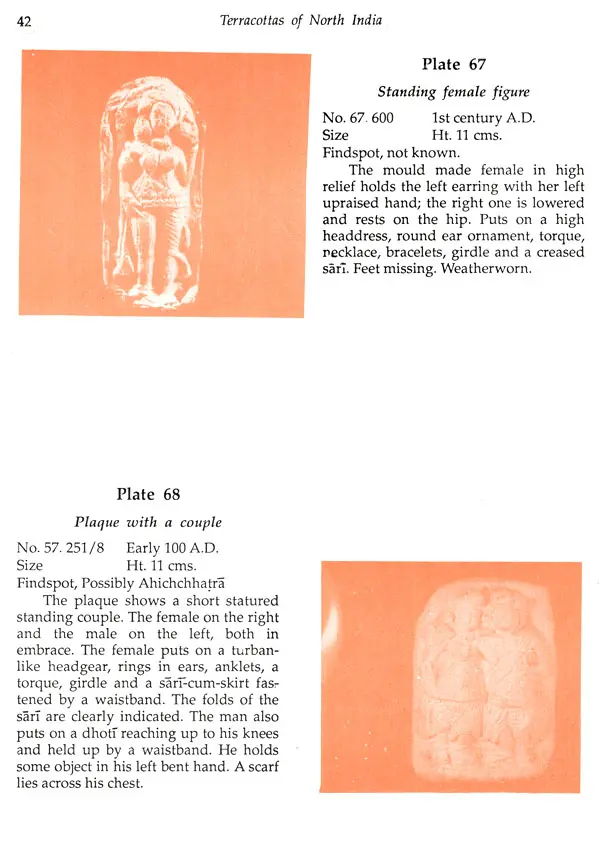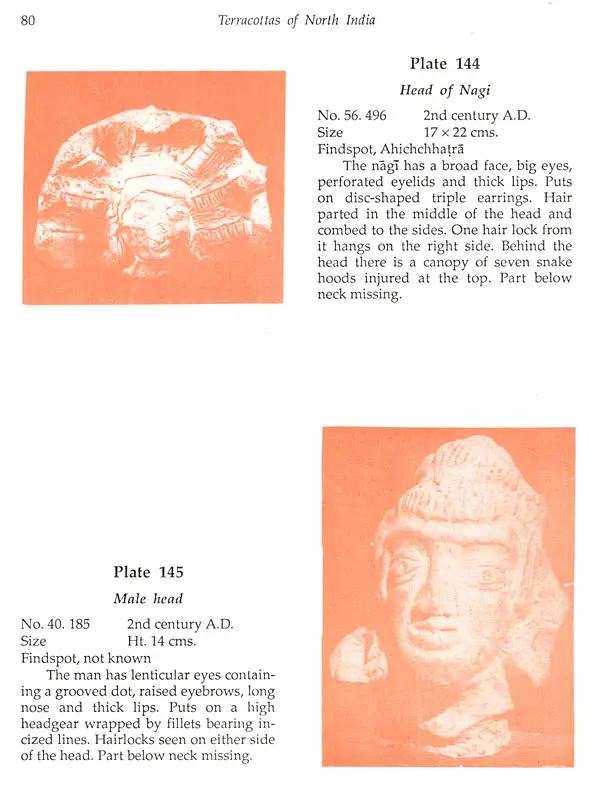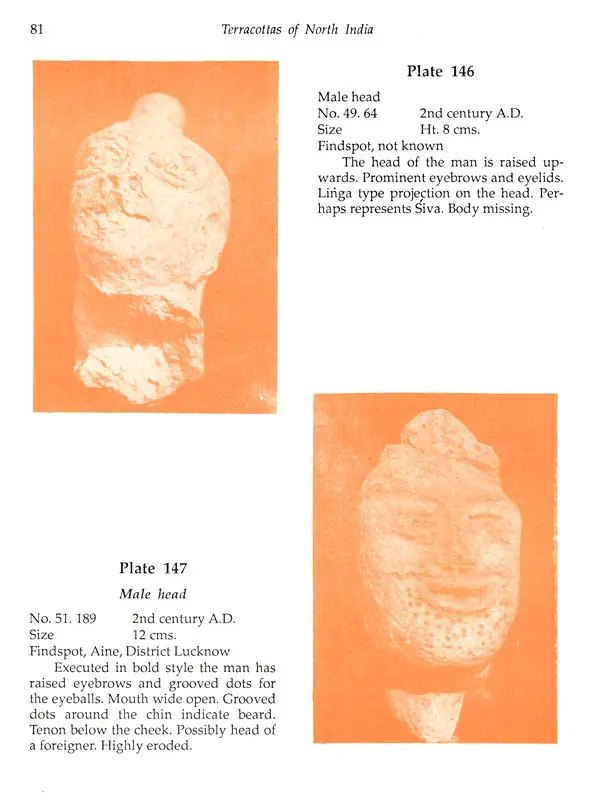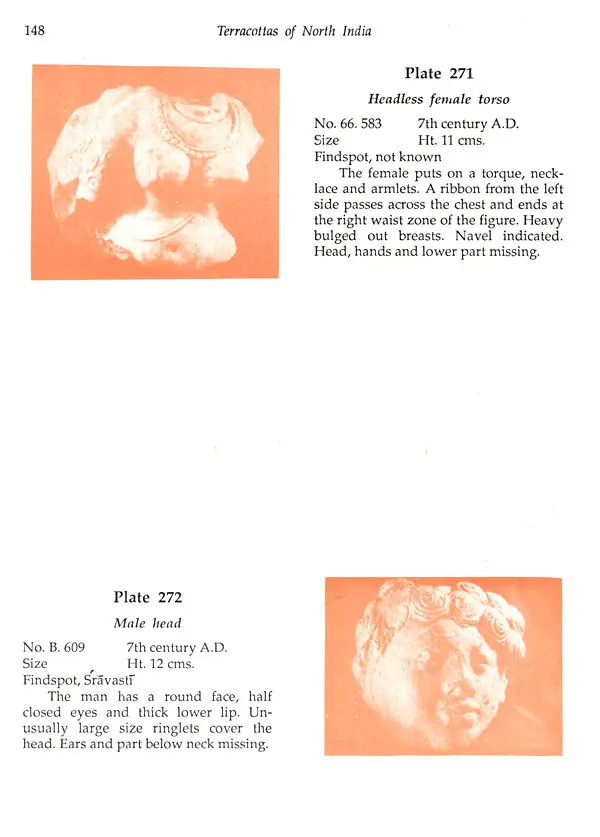
Terracottas of North India (In the Collection of State Museum Lucknow)
Book Specification
| Item Code: | UAO972 |
| Author: | S.C Kala |
| Publisher: | Agam Kala Prakashan, Delhi |
| Language: | English |
| Edition: | 1993 |
| ISBN: | 8173200106 |
| Pages: | 179 (Throughout Color Illustrations) |
| Cover: | HARDCOVER |
| Other Details | 11.00 X 9.00 inch |
| Weight | 1.01 kg |
Book Description
Terracotta is an important medium of Indian art. Somehow very little attention has been paid to this subject. Many a scholars in the forties placed it under the category of folk art'.
Things have now changed and there is effective awareness and recognition of the subject. Terracottas were mass produced and a vast number of these are lying with the Archaeological Survey of India, State museums and private collections. The material needs detailed documentation.
Dr. S.C. Kala, author of the present book has been in the forefront in the comprehensive study of the subject since last five decades. His wide ranging, precise and well-classified description of the terracottas housed in the State Museum, Lucknow will be a major break-through in the plastic art history of India.
Dr. S.C. Kala, an eminent authority on terracotta art, served the Allahabad Museum for 34 years as its Director. Born in the year 1916 at Srinagar Garhwal, Dr. Kala took his M.A. degree in ancient Indian History and Culture from the Banaras Hindu University with credit. He was awarded the Ph.D. degree by the Calcutta University for his thesis entitled "The Terracottas of Kausambi with a comparative study of the Terracottas of the Ganga Jamuna Doab". He was recipient of Jawaharlal Nehru Fellowship for conducting a survey of Indian terracotta art. For his high class scholarship, Dr. Kala was decorated with the title of "Padmashri" by the Government of India in the year 1985. Dr. Kala is also recipient of the Indian Museum Centenary Gold Medal and also of Salar Jung Memorial Gold Medal for outstanding contribution in the field of art and museology.
A Versatile scholar Dr. Kala's books include, Mohenjodaro, Bharhut Vedika, Indian Miniatures in the Allahabad Museum, Terracotta Figurines from Kausambi and Terracottas in the Allahabad Museum besides over sixty articles.
The State Museum, Lucknow possesses a unique collection of terracottas. Most of these are surface finds collected by different agencies and presented to the Museum without mentioning the provenance. There is also a good set of excavated and pur chased items. Varied in technique, subjects, expression and cultural interaction, the ter racottas of the Museum fully reveal the creativity and marvel of the hand of the unknown artists working in the medium of terracotta.
In the year 1989 the Department of Cultural Affairs, UP offered me a fellowship to prepare a Catalogue of Terracottas housed in the State Museum. I examined about 4,000 specimens and selected for publication only those which are outstanding. I am confident that the new material being presented in this work will lead to a new vision and usher a significant breakthrough in the study of Indian terracotta art.
I express my gratitude to Shri Alok Sinha, IAS, Secretary, Department of Cultural Affairs, U.P. for initiating me to undertake this project. I also thank Dr. S.D. Trivedi and his staff in the State Museum for helping me in the preparation of this Catalogue and also oblige to Dr Agam Prasad for publishing this important book in the shortest pos sible time.
The terracotta art today is accepted as a major medium of Indian art. Sculptural wealth of India is fabulous. So the majority of the past art-historians devoted their time to the exclusive study of sculpture and also, to some extent, to the numismatics, epig raphy and painting. Terracotta art remained neglected for long decades and objects exhumed in the excavations (though most of the reports have since been published) were not adequately described by the explorers. The terracotta art in its socio-religious and technical perspective was not properly discussed in the reports. A huge collection of terracottas in the museums, particularly of north India yet remains to be studied. A good number of scholars still assign this art a secondary position but their views need revision in the light of the numerous terracottas of various types and subjects unearthed during the past six decades.
Terracotta art has to offer many rare facets to Indian art history. At the same time its study is faced with intricate problems and issues. By and large sculptural art deals with religious subjects. Hence it has practically no scope for adopting secular scenes. Images were initially made according to the imagination, tradition and later prescribed canons. Scenes in Buddhist art as evident from Bharhut, Sanchi, Amaravati and elsewhere primarily relate to Jataka stories. Terracotta art does not follow any prescribed canons though its references occur in ancient literature in fact there were no set guidelines available to the artists in this particular medium at any stage The art is devoid of chronological narration. Cohesive history of the subjects in terracotta is yet to be formu lated. There are stray terracotta male and female figurines each hiding its mysterious form, role and concept. Presumption in identification of such types would be rather risky.
The style and adornment of the figurines from various centres also puts us in a dilemma. We assign certain types to the Sunga age. But the jewellery and apparel of the figures in the sculptures of the same period is different from the terracotta types. Why this striking diversity in the dress, jewellery and even subjects, is a moot question to which scholars have to think seriously. Such issues complicate even the problem of dating. Indian history has passed through various phases and historians have carved out broad periods like pre-Maurya, Maurya, Sunga, Kusina, Gupta and post-Gupta. While passing through one phase to the other there must be a transitional period. it is this stage which is crucial in the dating and chronology of art history. It is an admitted fact that due to political upheavals, human vandalism and destructive atmospheric elements we have lost a good number of art objects including terracottas. However the survived material has to be examined and re-assessed from two angles-the transition al and the final. One period-style cannot abruptly pass to the second stage straight away. It has to move through a process which for convenience sake we may term 'experimental' or 'transitional. The change is undoubtedly a hard exercise for the artist.
Book's Contents and Sample Pages
